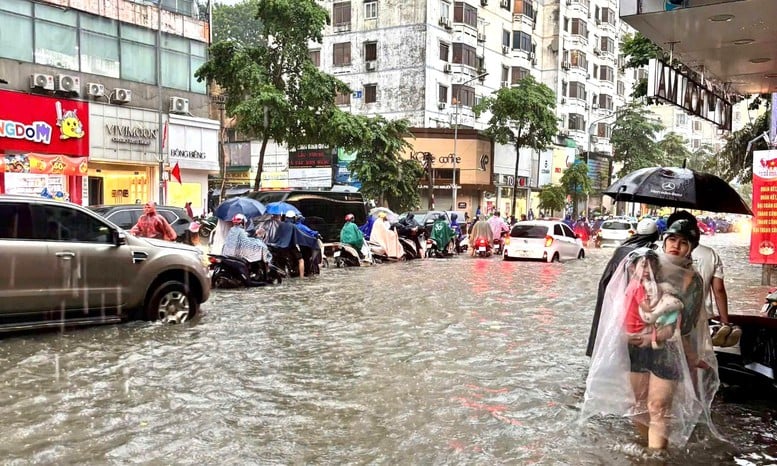
The rapid concreting process, filling of lakes and ponds, narrowing of rivers and canals, along with increased extreme rain, have made urban flooding increasingly serious in both frequency and scope.
According to a report by the Ministry of Construction , the country currently has about 900 urban areas, with an urbanization rate of 44.3% and is expected to exceed 50% by 2030. The rapid concreting process, filling of lakes and ponds, narrowing of rivers and canals, and increased extreme rains have made urban flooding increasingly serious in both frequency and scope.
Urban flooding causes damage of 1-1.5% of GDP each year
By 2024, preliminary statistics show that there will be about 397 flooded areas in urban areas, with a total flooded area of about 924 hectares. In Hanoi , Ho Chi Minh City, Da Nang, Hue, Can Tho, Hai Phong, etc., many central areas are often flooded 0.3-0.8 m deep, with drainage time after rain lasting from 3-6 hours, even longer when heavy rain coincides with high tide.
The consequences of flooding not only cause great economic and social damage (estimated at 1-1.5% of urban GDP each year), but also seriously affect the quality of the living environment, urban traffic, public health and urban landscape.
The old public drainage system also causes domestic wastewater to overflow into the environment every time it floods, posing a risk of disease outbreaks in crowded residential areas.
The drainage system only meets 20-25% of the demand.
According to the Ministry of Construction, most of the drainage systems in urban areas were built before the 1990s, mainly combined drainage systems that both drain rainwater and wastewater. Many sewers have degraded, silted up, are small in scale, and are no longer suitable for the current rainfall.
The country currently has about 83 urban wastewater treatment plants with a total designed capacity of more than 2 million m³/day and night, but they only operate at 50-60% due to the lack of a synchronous collection network. The rate of urban domestic wastewater collected and treated to meet new standards is about 18%, mainly concentrated in special and type I urban areas.
Investment resources for drainage are still very limited. In the period 1995-2021, the total investment capital for drainage and urban wastewater treatment is about more than 3 billion USD, while the capital demand by 2030 is estimated at 250,000-300,000 billion VND (equivalent to about 2% of GDP in 2024). The State budget can only meet 20-25% of the demand, PPP projects in this field have almost not appeared during the period when the PPP Law 2020 took effect.
"Drainage planning in many places has not kept up with the pace of urbanization and lacks connection with traffic, land use and irrigation planning. Locally raised ground, filled in ponds and lakes, and encroachment on canals and ditches increases the risk of flooding in low-lying areas," the report stated.
In addition, according to updated scenarios, extreme rainfall in urban areas tends to increase by 20-30%, the number of days with heavy rain (over 100mm/day) doubles compared to the period 1990-2000.
Sea level rises by an average of 3-4 mm/year, combined with high tides, strong storms, river floods and land subsidence of 1.5-2.5 cm/year in some delta areas, causing many urban areas such as Ho Chi Minh City, Can Tho, Ca Mau... to face increasing flooding pressure.
Urban flooding is no longer a story of big cities or deltas alone, but has appeared in many different "forms": flooding due to heavy rain that cannot drain in time (Hanoi, Hai Phong, Da Lat), flooding due to high tides (Ho Chi Minh City, Can Tho, Da Nang), flooding due to blocked floods and subsidence of ground in downstream and coastal areas.
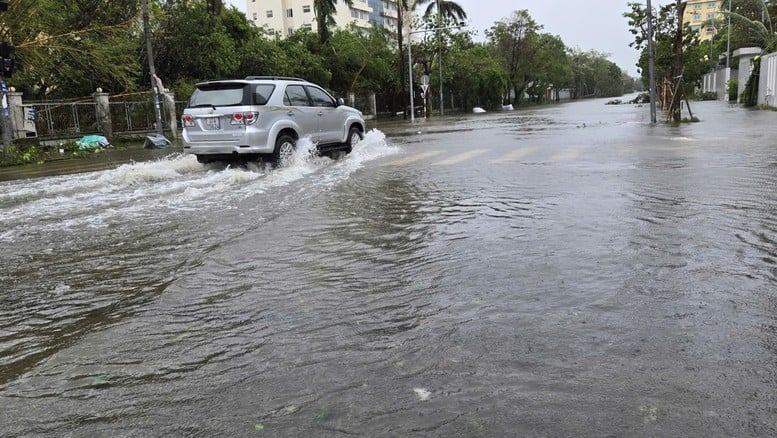
The Ministry of Construction proposed to the Government a series of strategic solutions to solve the problem of urban flooding.
Based on a full identification of the current situation and causes, the Ministry of Construction recommends to the Government a series of strategic solutions.
First, the Ministry of Construction will revise and complete the Law on Water Supply and Drainage, and submit it to the National Assembly for approval at the May 2026 session. The Law will be a unified legal framework for management, investment, operation of water supply, drainage, wastewater treatment and urban flood control systems; at the same time, amend and supplement Decree 80/2014/ND-CP to add content on flood management and protection of natural drainage corridors.
The Ministry also proposed to issue a Government Resolution on "Strengthening management and investment in drainage to prevent urban flooding in the 2026-2035 period"; assigning the development of a drainage project to prevent and combat urban flooding in response to climate change in the 2026-2035 period, with a vision to 2050.
Notably, the Ministry of Construction recommended that the Government pay attention to leading and directing ministries, branches, and People's Committees of provinces and centrally run cities to focus on reviewing and implementing synchronous solutions for flood prevention, drainage and wastewater treatment in urban areas; assigning the Ministry to preside over the development of the "Urban flood prevention and drainage project adapting to climate change for the period 2026-2035, with a vision to 2050".
The project will focus on major groups of tasks: Reviewing and adjusting drainage planning in conjunction with provincial planning, urban planning, traffic, irrigation and land use; Prioritizing investment in key projects: Regulating lakes, pumping stations, tide control culverts, inter-regional sewer lines, wastewater collection and treatment systems.
Strongly apply digital technology, build flood maps, smart drainage control centers in large cities; Mobilize diverse resources, in which the state budget plays the role of "seed capital", combining ODA capital, green credit and PPP model; Strengthen propaganda, raise public awareness, limit littering, encroachment on canals, protect natural flood drainage space.
The goal by 2035 is to basically control flooding in large cities, increase the rate of collection and treatment of domestic wastewater to 30-40%, and have separate or semi-separate drainage systems in class I cities and above, and complete flood maps and warning systems, and operate smart drainage.
Phan Trang
Source: https://baochinhphu.vn/bo-xay-dung-de-xuat-loat-giai-phap-chong-ngap-ung-do-thi-102251117154728688.htm







![[Photo] General Secretary To Lam and National Assembly Chairman Tran Thanh Man attend the 80th Anniversary of the Traditional Day of the Vietnamese Inspection Sector](https://vphoto.vietnam.vn/thumb/1200x675/vietnam/resource/IMAGE/2025/11/17/1763356362984_a2-bnd-7940-3561-jpg.webp)


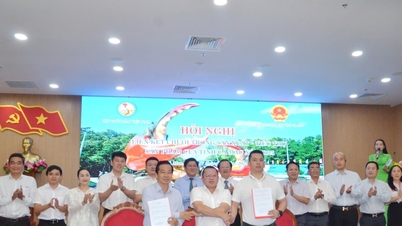




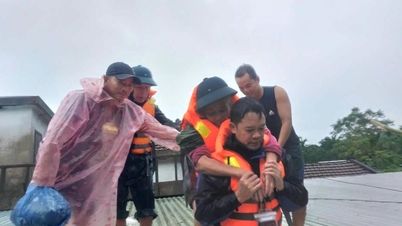






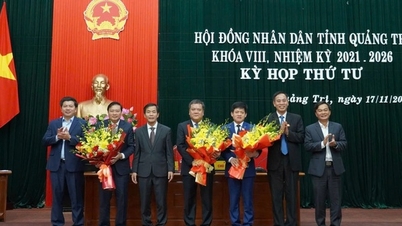


















































































Comment (0)